The data type intp is mentioned in the following table:

Also, what does indexing means?
The data type intp is mentioned in the following table:

Also, what does indexing means?
Integer array indexing
Integer array indexing allows selection of arbitrary items in the array based on their N-dimensional index. Each integer array represents a number of indexes into that dimension. Purely integer array indexing
When the index consists of as many integer arrays as the array being indexed has dimensions, the indexing is straight forward, but different from slicing.
Advanced indexes always are broadcast and iterated as one:
result[i_1, ..., i_M] == x[ind_1[i_1, ..., i_M], ind_2[i_1, ..., i_M],
..., ind_N[i_1, ..., i_M]]
Note that the result shape is identical to the (broadcast) indexing array shapes ind_1, ..., ind_N.
Example
From each row, a specific element should be selected. The row index is just [0, 1, 2] and the column index specifies the element to choose for the corresponding row, here [0, 1, 0]. Using both together the task can be solved using advanced indexing:
x = np.array([[1, 2], [3, 4], [5, 6]])
x[[0, 1, 2], [0, 1, 0]]
array([1, 4, 5])
To achieve a behaviour similar to the basic slicing above, broadcasting can be used. The function ix_ can help with this broadcasting. This is best understood with an example.
Example
From a 4x3 array the corner elements should be selected using advanced indexing. Thus all elements for which the column is one of [0, 2] and the row is one of [0, 3] need to be selected. To use advanced indexing one needs to select all elements explicitly. Using the method explained previously one could write:
x = np.array([[ 0, 1, 2],
[ 3, 4, 5],
[ 6, 7, 8],
[ 9, 10, 11]])
rows = np.array([[0, 0],
[3, 3]], dtype=np.intp)
columns = np.array([[0, 2],
[0, 2]], dtype=np.intp)
x[rows, columns]
array([[ 0, 2],
[ 9, 11]])
However, since the indexing arrays above just repeat themselves, broadcasting can be used (compare operations such as rows[:, np.newaxis] + columns) to simplify this:
rows = np.array([0, 3], dtype=np.intp)
columns = np.array([0, 2], dtype=np.intp)
rows[:, np.newaxis]
array([[0],
[3]])
x[rows[:, np.newaxis], columns]
array([[ 0, 2],
[ 9, 11]])
This broadcasting can also be achieved using the function ix_:
x[np.ix_(rows, columns)]
array([[ 0, 2],
[ 9, 11]])
Note that without the np.ix_ call, only the diagonal elements would be selected, as was used in the previous example. This difference is the most important thing to remember about indexing with multiple advanced indexes.
Please read this.
REF: https://numpy.org/doc/stable/reference/arrays.indexing.html